Yellow Potentilla: varieties, planting and care
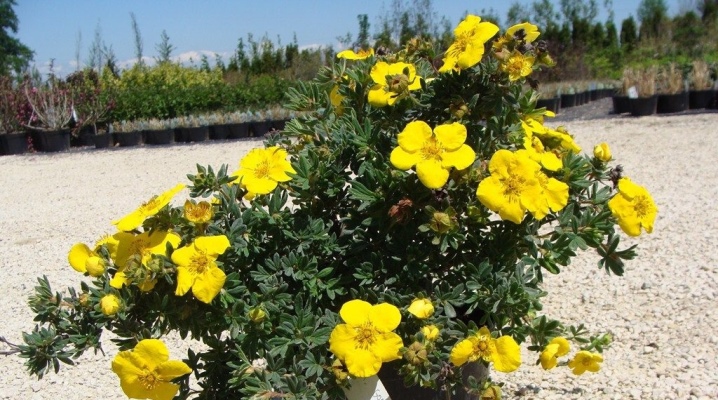
The favorite of landscape designers and gardening enthusiasts has been and remains yellow cinquefoil. She attracts attention with a huge number of inflorescences. Potentilla blooms and pleases with its beauty until late autumn, thanks to which it becomes a leader among such plants.
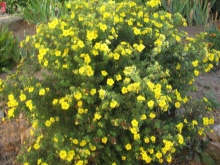
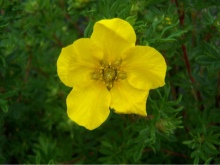
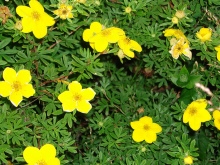
Varietal variety
Yellow cinquefoil is part of the Rose family, the second name of this plant is Kuril tea. It is a perennial shrub up to 1.5 meters high. The leaves give the bush a lush shape, they are divided into several lobes, which gives them volume. They are also covered with soft villi, which makes them appear silky.
Due to the fact that the plant is a hybrid of wild-growing shrubs, it easily takes root in areas with a harsh climate.
Kuril tea is also a medicinal plant. It is used for allergies, as an antiviral and hemostatic agent, for gastric and gynecological ailments. Its external use is possible for skin inflammations.
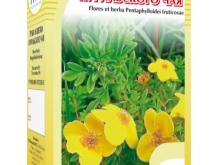

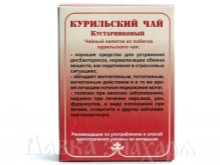
To date, 500 species of Potentilla have been registered. Specifically, the yellow cinquefoil has several varieties. Here is a description of some of them.
- "Goldstar" - undersized shrub. Its height is no higher than 80 cm, the diameter of the bush reaches 1.2 meters. The leaves, like all varieties of Potentilla, are five-lobed, dark gray-green in color. Inflorescences are bright yellow, have 5 rounded petals, grow singly or in 3 pieces. The core of the flowers is large and fluffy. "Goldstar" is a frost-resistant variety, which makes it possible to grow it in Russia. In a year, the shrub increases in volume by 15 cm, the bush forms on its own, therefore, does not require pruning. Light and moist soil is suitable for planting it.
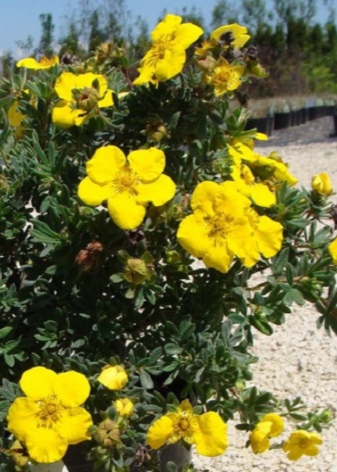

- Goldfinger is the highest grade of yellow Potentilla. It grows up to 1.3 m, the crown diameter reaches 1.5 m. The bush is dense, its branches are straight. Inflorescences are large, up to 5 cm, lemon or bright yellow tone. The leaves are small, have 3 to 7 lobes, dark green. The bush requires pruning, since straight shoots cannot form a beautiful crown on their own. Poorly tolerates dense soils, photophilous, tolerates drought well.
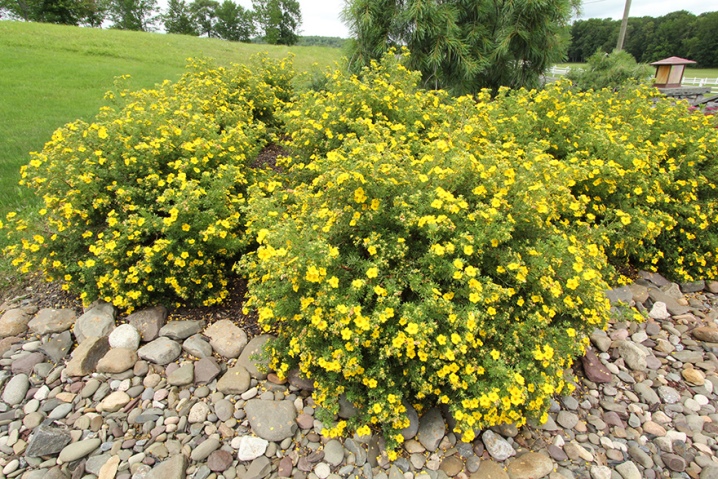
- Goldteppich - the smallest shrub. It has a dense pillow-like crown 1 m wide. The leaves are small - 2-3 cm, yellowish-green.
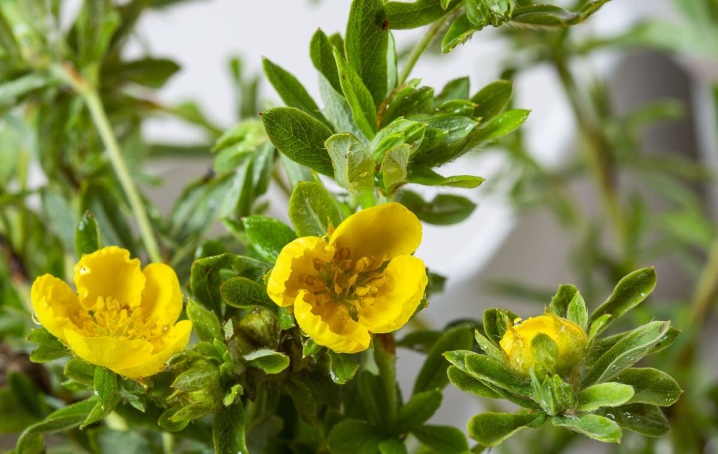
- Summerfloor - a dwarf bush with a dense crown up to 60 cm high, up to 100 cm wide. It is unpretentious, but prefers sunny areas with the possibility of light shading. The crop needs pruning in early spring.


- "Kobold" Is a medium-sized, brightly flowering shrub. The leaves of this shrub are soft green in the spring, and in the summer with a tint of silver, bright yellow flowers. Prefers spring pruning.

- "Yellow Queen" - hybrid variety, undersized, up to 30 cm. The flowers are shiny, rich yellow. The leaves are pointed, trifoliate with shine, bright green. Unpretentious, frost-resistant.


- "Kalgan" (erect cinquefoil) - perennial from 15 to 50 cm high. Flowers bloom at the top of the stem, consist of 4 round petals. The crown is voluminous, branched, branches can be either erect or raised.
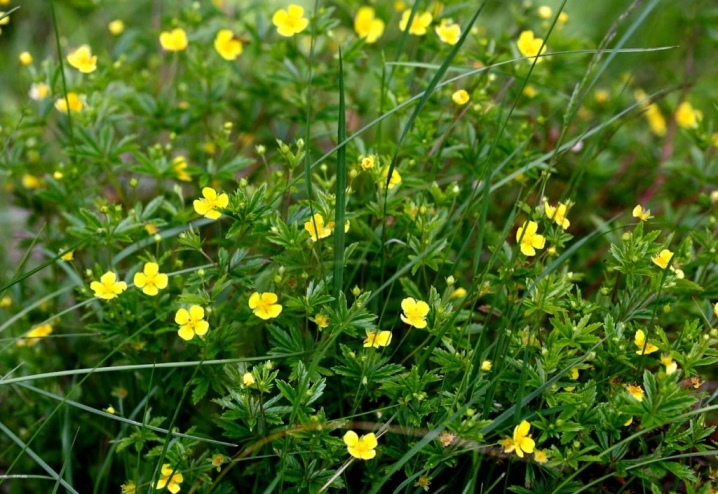
General rules of planting and care
Cinquefoil is not picky and unpretentious, so planting and growing this plant will not be difficult for gardeners. It will take a minimum of effort and action to maintain the health and beauty of Potentilla.
The first step is to choose a landing site. It should be sunny, but slightly shaded. Constant direct sunlight does not have a very good effect on the appearance and general condition of the plant. From the bright rays, the inflorescences begin to burn and fall off, and the leaves fade. Therefore, cinquefoil should be planted in shaded areas with moderate humidity. Cinquefoil is frost-resistant and not afraid of drafts, so you can choose a large area for it, where the winds are walking.
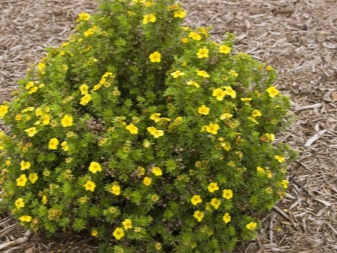
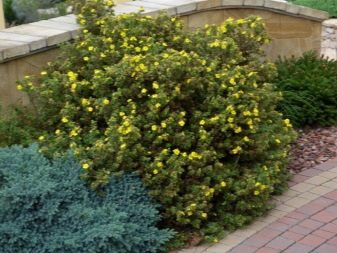
Yellow cinquefoil is very demanding on the soil. So, heavy loamy soils are not suitable for planting. She needs a light, moderately acidic soil with a good drainage system. If heavy loam predominates on the site, do not be upset. To plant Potentilla yellow, a mixture of gravel and sand must be added to the soil, which will lighten the soil.
Planting is carried out in early spring after the ground warms up, or in the fall.
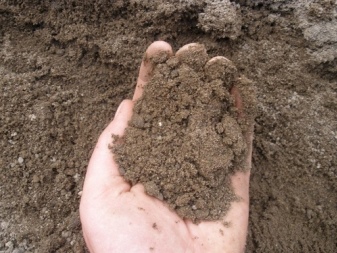
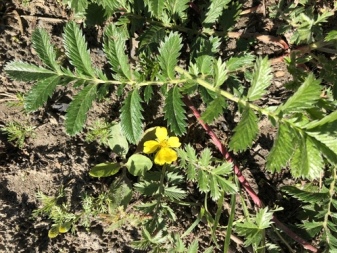
In seedlings of Potentilla yellow shrub, the root system is superficial, and this must be taken into account when planting.
- A hole is dug 50-60 cm deep. If several plants are planted, the distance between them should be at least 30 cm. The hole is prepared 10 days before planting so that the soil is compacted.
- Drainage is laid out on the bottom (gravel, crushed stone, river pebbles). Then the nutrient mixture is added. It includes rotten leaves and humus, a little sand and mineral fertilizers.
- The rest is filled with earth from this hole.
- Before planting, the roots of the shrub are straightened and laid in the hole, gradually sprinkled with earth. It is important that the root collar is above ground level.
- After planting, the bush is abundantly watered and sprinkled with mulch (leaves, straw, sawdust).
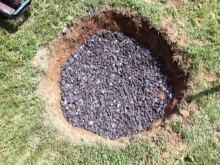
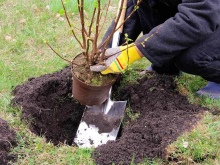

Cultivation of Potentilla is easy enough. For its stable growth, you do not need to put in a lot of effort. It is necessary to water the seedlings in a timely manner, periodically weed the planting site and loosen the soil. Top dressing is carried out 3 times per season and, of course, mulching. If mulch is available, the need for watering is reduced.
For greater decorativeness, crop pruning is carried out. It is better to form a bush in spring or early autumn. Such pruning is carried out once every 3 years. There is also the so-called sanitary pruning.
Broken, weak shoots are pruned throughout the season, or if they are affected by fungi or pests.
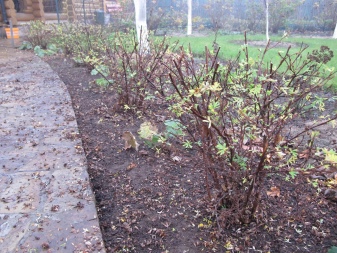
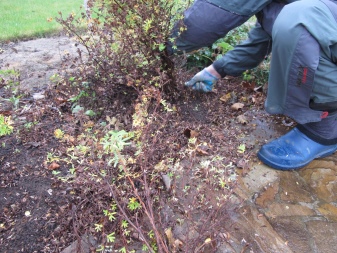
Diseases and pests
Perennial shrubs of Potentilla rarely suffer from various diseases. This fact makes it very easy to care for the plant. But Potentilla cannot cope with ailments on its own.
- Spotting - spots of various colors that appear on the leaves. Damaged leaves dry up and fall off ahead of schedule, which leads to disruption of the physiological processes of the plant. The cause of this disease is fungal infections.
- Rust - dirty red or yellow-brown spots on the leaves. After some time, pads are formed in place of the spots, hollow inside. The cause of the disease is a rust fungus, the spores of which are found in fallen leaves or neighboring plants. In spring, after ripening, they are spread by wind or insects.
- Powdery mildew - a fungal disease that affects foliage, shoots and petioles. It manifests itself in the form of a white coating, on the surface of which drops of moisture appear.
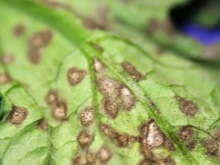

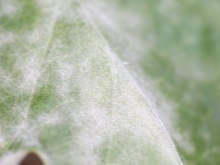
These diseases are caused by spores of various fungi. And for the same reason, the shrub stops blooming, as the inflorescences dry up and fall off. But do not be upset, all these diseases are treated if you do not start the process. To do this, it is necessary to remove the damaged parts of the shrub (cut off). Sometimes you have to cut off most of the bush. After that, you need to treat the plant with fungicides, good, in our modern world there are many of them.
The huge advantage of yellow Potentilla is that pests do not like this plant.Therefore, do not worry that any insects may appear on the bush.

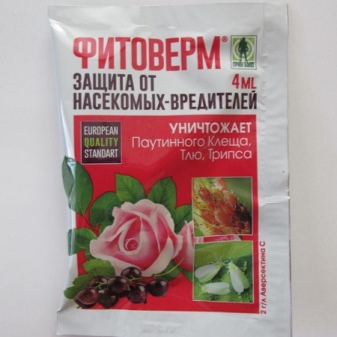
All varieties and types of Potentilla have a negative attitude towards transplantation. This is the only stressful situation for the plant. Most often, after transplanting, plants require careful care, otherwise the shrub dies. The principle of transplanting is very simple: a bush with a lump of earth is dug up and transplanted to a new place. Naturally, the hole is prepared in advance, the necessary vitamins and minerals are added to it in advance.


Use in landscape design
Cinquefoil is one of the top best ornamental shrubs. It is actively used by designers in landscaping areas. Its advantages:
- unpretentious care;
- resistance to severe weather conditions;
- ease of bush formation;
- abundant and lush bloom.
In landscape design, it is used as an independent plant. Low-growing shrubs can serve as a frame. Higher varieties are planted as hedges, as they easily acquire the desired shape.
Alpine slide is a compositional group of various plants. Cinquefoil fits perfectly into it, regardless of whether it is a shrub or herbaceous plant.
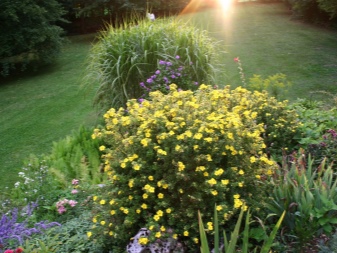
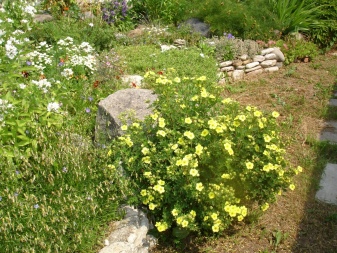
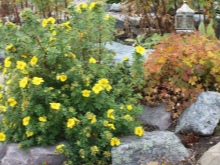
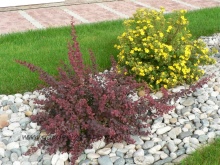

How to plant and care for this shrub is described in detail in the next video.



































































The comment was sent successfully.